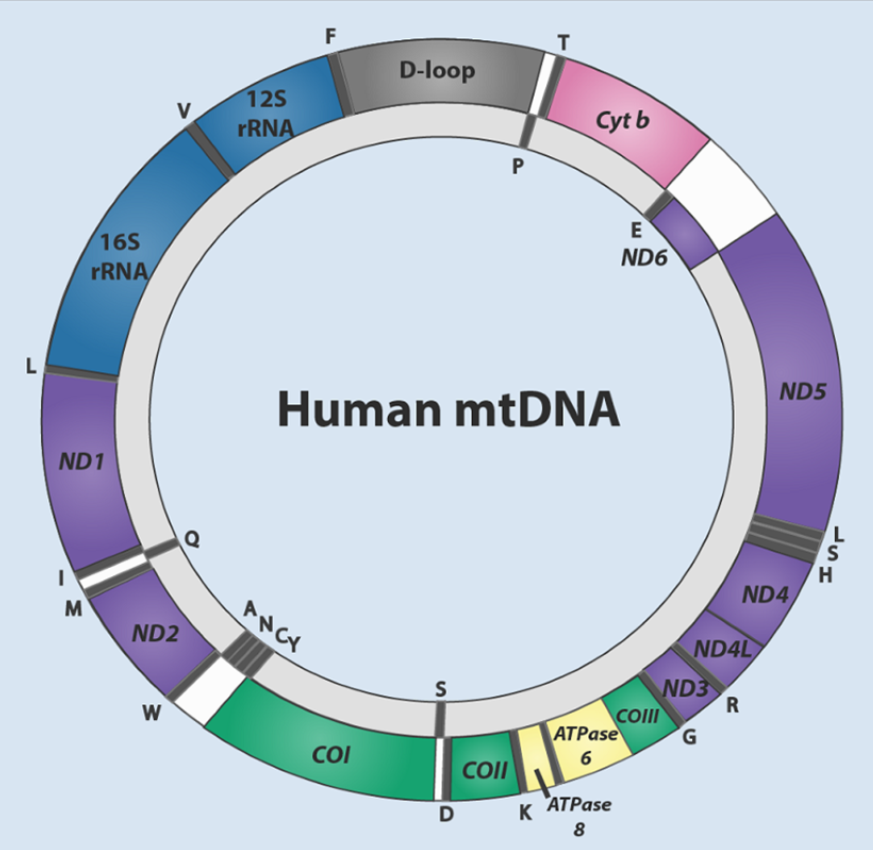
Can changes in mitochondrial DNA affect health and development
 المؤلف:
Genetics Home Reference
المؤلف:
Genetics Home Reference
 المصدر:
Help Me Understand Genetics
المصدر:
Help Me Understand Genetics
 الجزء والصفحة:
الجزء والصفحة:
 13-10-2020
13-10-2020
 2259
2259
Can changes in mitochondrial DNA affect health and development ?
Mitochondria are structures within cells that convert the energy from food into a form that cells can use. Although most DNA is packaged in chromosomes within the nucleus, mitochondria also have a small amount of their own DNA (known as mitochondrial DNA or mtDNA).
In some cases, inherited changes in mitochondrial DNA can cause problems with growth, development, and function of the body’s systems. These mutations disrupt the
mitochondria’s ability to generate energy efficiently for the cell. Conditions caused by mutations in mitochondrial DNA often involve multiple organ systems. The effects of these conditions are most pronounced in organs and tissues that require a lot of energy (such as the heart, brain, and muscles).
Although the health consequences of inherited mitochondrial DNA mutations vary widely, frequently observed features include muscle weakness and wasting, problems with movement, diabetes, kidney failure, heart disease, loss of intellectual functions (dementia), hearing loss, and abnormalities involving the eyes and vision.
Mitochondrial DNA is also prone to somatic mutations, which are not inherited. Somatic mutations occur in the DNA of certain cells during a person’s lifetime and typically are not passed to future generations.
Because mitochondrial DNA has a limited ability to repair itself when it is damaged, these mutations tend to build up over time. A buildup of somatic mutations in mitochondrial DNA has been associated with some forms of cancer and an increased risk of certain age-related disorders such as heart disease, Alzheimer disease, and Parkinson disease. Additionally, research suggests that the progressive accumulation of these mutations over a person’s lifetime may play a role in the normal process of aging.

 الاكثر قراءة في مواضيع عامة في الاحياء الجزيئي
الاكثر قراءة في مواضيع عامة في الاحياء الجزيئي
 اخر الاخبار
اخر الاخبار
اخبار العتبة العباسية المقدسة


